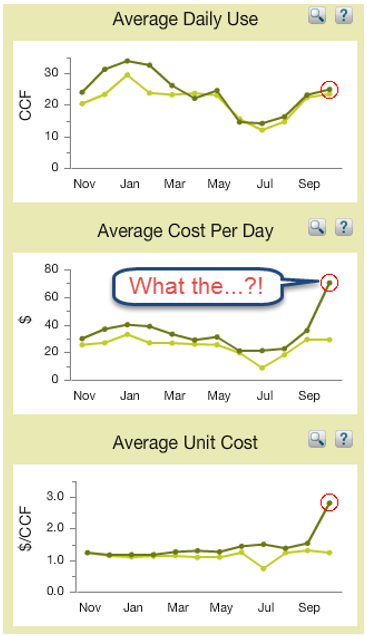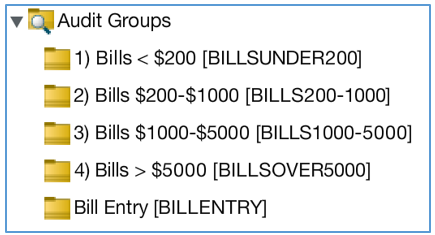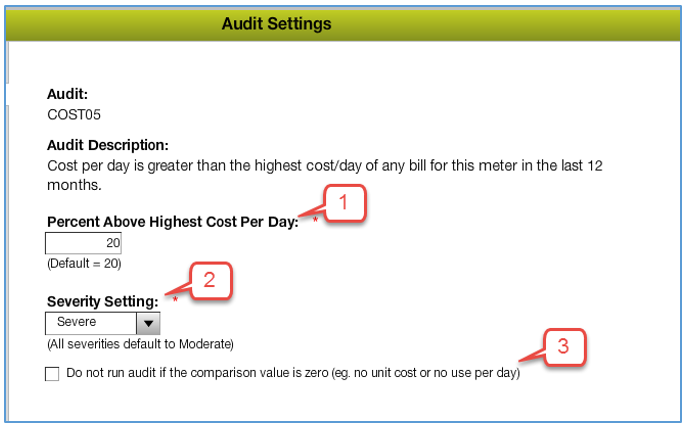 “How are you currently processing your utility bills?”
“How are you currently processing your utility bills?”
Here at EnergyCAP, we’ve been asking that question of our prospects for decades. Surprisingly, the answers are often more about what people are NOT doing, rather than what they ARE doing:
The most common answers are:
- “Each department receives its bills, gives them a visual check, and then forwards them to Accounting for payment.”
- “Accounting receives the bills and pays them, and then they send us a spreadsheet to review.”
Both responses (“check first” or “check later”) are commonly followed by, “We know we should check our utility bills more closely, but we don’t have a system in place to do that.”
These folks have already figured out that they should be auditing their utility bills. They just want to do it better. And that, of course, is where EnergyCAP comes in. EnergyCAP enables you to audit effectively.
With an out-of-the-box library of 55 audits, EnergyCAP is a very capable utility bill auditing tool. The challenge for our users is to fine-tune audits to minimize false-positives and focus in on the real billing issues that warrant the energy or facility manager’s attention.
{{cta(’03e9539f-8347-4383-ab6f-58993575a78d’,’justifycenter’)}}
Preliminary Problem
Before utility bills can be audited BY EnergyCAP, the data needs to be brought INTO EnergyCAP, and that can be a major hurdle for organizations that receive hundreds or thousands of utility bills every month. Bills can be hand-keyed, and EnergyCAP’s bill entry templates make the data entry process relatively efficient. But, manual entry is prone to typos. Correcting bad data takes time away from more valuable auditing and analysis functions, so we recommend subscribing to our Bill CAPture bill processing service. Another option is importing electronic invoices that may be accessible to you in .CSV, .XLS, .XLSX, EDI 810, or .DAT file formats.
The “Visual Check”
 For most organizations, a “visual check” of utility bills usually consists of scrolling through a spreadsheet that has been exported from the organization’s accounting system. Some people will just quickly flip through the paper bills, hoping to spot any obvious issues, such as a large cost increase from the previous month or an unpaid balance. Unfortunately, there are multiple potential billing issues, and all too frequently, these types of visual checks are performed very quickly, informally, and without reference to meaningful metrics.
For most organizations, a “visual check” of utility bills usually consists of scrolling through a spreadsheet that has been exported from the organization’s accounting system. Some people will just quickly flip through the paper bills, hoping to spot any obvious issues, such as a large cost increase from the previous month or an unpaid balance. Unfortunately, there are multiple potential billing issues, and all too frequently, these types of visual checks are performed very quickly, informally, and without reference to meaningful metrics.
EnergyCAP provides a different kind of visual check, using three complementary and very revealing metrics:
- Average Daily Use
- Average Cost Per Day
- Average Unit Cost
All three of these complementary metrics are automatically normalized for billing period length (which can vary significantly from month to month). Real-time charts displaying each metric are updated right on the bill entry template as billing data is entered, making it quite easy to identify real billing errors.
When to Audit
Each organization gets to determine its unique EnergyCAP workflow, including where in the process which bills are audited for potential issues. Our recommended best practice is to run an initial round of audits (e.g. Quick Check Audits) for all your bills right after the bills have been entered or imported, since most organizations prefer to catch an error prior to paying the bill. In these scenarios, the workflow might look something like this:

The process is streamlined, and there’s no redundant data entry, which can introduce additional errors.
As you are defining your optimum workflow, keep in mind that any EnergyCAP audits can be run against the bills at any time, and the auditing process can be automated or initiated manually. For the sake of efficiency, we recommend creating audit groups. Each group can contain one or more audits that are the most appropriate for the workflow stage and the specific bills being checked. Another best practice is to set up one audit group to check for obvious data entry errors and additional audit groups based on bill payment amounts:

One obvious advantage to this approach is that more exacting audit tolerances can be specified for the most significant bills.
How to Audit
Regardless of what audit groups are established and what workflow is in place, minimizing false positives is a universal objective. You will want to set up your auditing parameters in a manner that alerts you to real billing problems without forcing you to research a high number of non-issues. That objective can be met by tweaking the Audit Settings over time as you become more familiar with the patterns in your utility data.

- Variance Setting – Determine how tightly you want to audit the bill. In the above example, the allowable variance is 20%. If the costs of the bills to be audited are relatively consistent, then a smaller variance can be applied. When you expect bill costs to vary widely from month to month, a larger variance percentage is appropriate.
- Severity Setting – To help you prioritize audit failures, you can select any of five different severity settings: Low, Moderate, Severe, Fail, Export Hold.
- Do Not Run – If you are auditing historical bills and know that there may be missing data, check this box to avoid generating false positives.
If, after you’ve run through a few audit cycles, you are still receiving a high number of audit failures, you can continue to fine-tune your audit settings. You may even develop seasonal or cyclic audits. We recommend starting with the Bill Audit Statistics (BL27B) report to see which audits are producing the most failures, and then proceeding with variance adjustments to make sure EnergyCAP is alerting you to the billing issues that truly warrant your attention.

Auditing Works!
Should anyone at your organization question the value of utility bill auditing, feel free to share these success stories:
A medical center at a major California university received a $195,000 utility bill refund, thanks to EnergyCAP’s utility bill audits. The collection and organization of the medical center’s utility bills revealed that for the past three years, the university had been incorrectly billed for sewage services. An additional $20,000 refund is now under review.
“We were able to find this $90,000 billing error so quickly thanks to the new EnergyCAP software that has been installed AND we were able to find the error BEFORE the paper bill was even opened thanks to the electronic data that [our vendor] provides us each month.” – Energy manager at a large municipality
Remember, we all make mistakes, utility vendors included. Meters can and do provide inaccurate readings. Account numbers change. Incorrect rate schedules are assigned. The list of issues that can result in an errant utility bill is sizable, so it’s important that you have tools and processes in place to identify the issues and correct them in a timely fashion. EnergyCAP audits can do that for you.
Learn more by reading our free eBook, 20 Ways to Find Utility Bill Savings.
{{cta(‘1540c932-ca88-4e8b-8709-88b2a42c96d0’)}}
 Best-in-class portfolio-level energy and utility bill data management and reporting.
Best-in-class portfolio-level energy and utility bill data management and reporting.
 Real-time energy and sustainability analytics for high-performance, net-zero buildings.
Real-time energy and sustainability analytics for high-performance, net-zero buildings.
 A holistic view of financial-grade scope 1, 2, and 3 carbon emissions data across your entire business.
A holistic view of financial-grade scope 1, 2, and 3 carbon emissions data across your entire business.
 Energy and sustainability benchmarking compliance software designed for utilities.
Energy and sustainability benchmarking compliance software designed for utilities.
 “How are you currently processing your utility bills?”
“How are you currently processing your utility bills?” For most organizations, a “visual check” of utility bills usually consists of scrolling through a spreadsheet that has been exported from the organization’s accounting system. Some people will just quickly flip through the paper bills, hoping to spot any obvious issues, such as a large cost increase from the previous month or an unpaid balance. Unfortunately, there are multiple potential billing issues, and all too frequently, these types of visual checks are performed very quickly, informally, and without reference to meaningful metrics.
For most organizations, a “visual check” of utility bills usually consists of scrolling through a spreadsheet that has been exported from the organization’s accounting system. Some people will just quickly flip through the paper bills, hoping to spot any obvious issues, such as a large cost increase from the previous month or an unpaid balance. Unfortunately, there are multiple potential billing issues, and all too frequently, these types of visual checks are performed very quickly, informally, and without reference to meaningful metrics.





